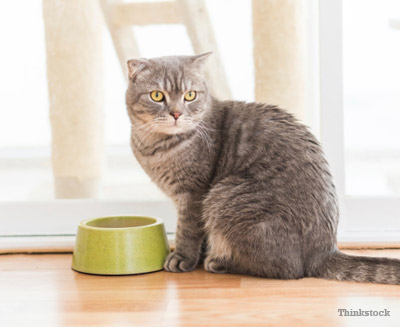
Way, way back in 1968, according to their website, 9Lives® introduced the world to a big, orange tabby cat named Morris® – “the world’s most finicky cat.” I don’t imagine that it was too difficult to ‘sell’ Morris as a character. Ask anyone who has ever had a cat (and probably most people who never have) if cats are picky eaters, and the answer will likely be an immediate and resounding, “Yes!”
Everyone probably has their own personal experiences on this subject. In my own household, I have had cats that would not, under any circumstances, eat any canned food whatsoever, and other cats that just wouldn’t eat the beef flavor. One cat loved crackers and popcorn. Another adored raspberry popsicles. And one of my current cats comes running at the offer of fresh papaya in the morning.
How do cats choose what to eat?
Cats have the opportunity to pick up a lot of things from the ground with their mouths. Clearly, they must have some criteria in place in order to not swallow the wrong things. (At the very least, medications always seem to fall into the ‘spit it out’ category.) But how do they make these choices?
One study, posted on the National Center for Biotechnology’s website, observed a group of cats and their diet choices based on offerings of different combinations of foods with either a strong predominant taste or no dominant taste. The researcher concluded that cats definitely use their sense of smell to select a food. They found that given the choice between one food, with an attractive odor, and another without, the cats ate the former without even bothering to taste the latter choice. On the other hand, if offered only options without an attractive choice (based on smell), the cats tasted the foods in order to make a selection1.
What else do studies have to say about cats’ eating habits?
Cats are obligate carnivores (meaning they have to eat some meat to obtain essential nutrients) with a natural diet consisting of a variety of small prey animals. Interestingly, cats do not even have the ability to taste “sweet2.” However, according to research posted by pet food manufacturer WALTHAM, cats do have the ability to self-regulate their nutrient intake. Through an extensive series of feeding studies, researchers determined that when cats were allowed to choose between a dozen different diets of varying nutritional composition, the cats achieved a target intake of 52% protein, 36% fat and 12% carbohydrate3.
Additional influences on cats’ dietary choices include neophobia and monotony. This means that, on one hand, a cat may naturally reject a new food offering or might only eat small amounts of it at first. On the other hand, if fed the same diet for too long, the cat may be struck by the monotony and look to find a new/novel food instead2. It is important to remember that if you cat has a sudden change in interest in its normal diet a medical check-up is warrented.
What does this all mean for your finicky cat?
Clearly, there are a lot of complicated factors coming into play when it comes to keeping your cat interested and nutritionally balanced. First, and especially if your cat suddenly becomes persnickety, see your veterinarian to rule out medical problems that might be affecting her appetite in general such as:
- Dental disease, inflammatory/infectious conditions, or other painful conditions in her mouth
- Sinus/respiratory disorders affecting her sense of smell
- Gastrointestinal disease or any metabolic condition that might upset her stomach or cause decreased appetite
- Medications that she might be taking that could decrease her appetite
If your veterinarian says your cat is healthy and is really just being picky, then use what you now know to your advantage. Offer her new and novel food choices (for more than one day to give her a chance to become familiar with them). You can also include stronger smelling options of different textures or consistencies. And try higher protein/lower carbohydrate diets. When she settles into a new routine, remember you can change it in the future, if needed. [Editor’s Note: Before making any diet changes, always discuss them with your veterinarian.]
Resources
- Hullár, I., S. Fekete, E. Andrásofszky, Z. Szöcs, and T. Berkényi. "Factors Influencing the Food Preference of Cats." National Center for Biotechnology Information. U.S. National Library of Medicine, Aug. 2015. Web. 04 Dec. 2015.
- "Cat Feeding Behaviour and Preference." Waltham.com. WALTHAM, Web. 04 Dec. 2015.
- Hewson-Hughes AK, Hewson-Hughes VL, Miller AT, Hall SR, Simpson SJ, Raubenheimer D. Geometric analysis of macronutrient selection in the adult domestic cat, Felis catus. J Exp Biol. 2011 Mar 15;214(Pt 6):1039-51
